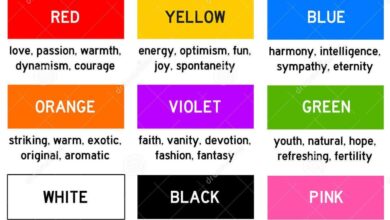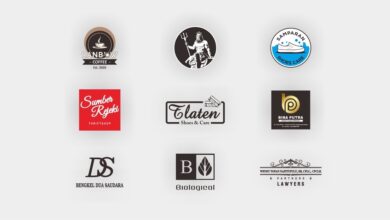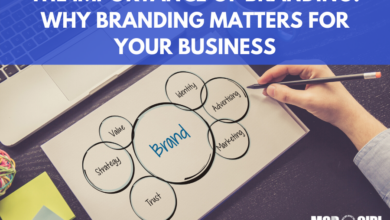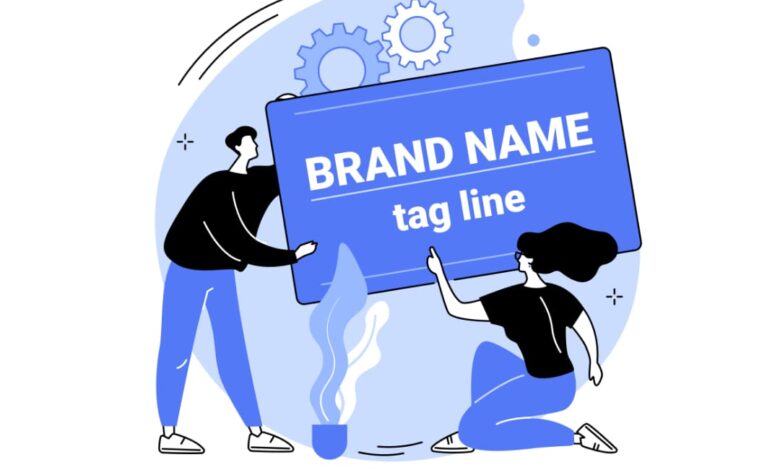
Create Good Branding Straplines A Guide
Create good branding straplines – it sounds simple, right? But crafting a memorable, impactful strapline that truly captures your brand’s essence is a surprisingly complex process. It’s more than just a catchy phrase; it’s the distilled essence of your brand identity, a concise promise to your customers, and a crucial element in building brand recognition. This journey explores the art of crafting a killer strapline, from defining your brand’s core values to testing and refining your final creation.
We’ll delve into understanding your target audience, identifying your unique selling proposition (USP), and brainstorming creative ideas. We’ll explore different approaches to generating strapline ideas, evaluate potential options, and discuss the legal and practical considerations involved in choosing and implementing your perfect strapline. Get ready to learn how to create a strapline that truly resonates with your audience and propels your brand to success!
Defining Brand Identity for a Strong Strapline
Crafting a truly memorable and effective strapline requires a deep understanding of your brand’s identity. It’s not just a catchy phrase; it’s a distillation of your brand’s essence, its promise to the customer, and its unique position in the market. A poorly conceived strapline can confuse or even repel potential customers, while a well-crafted one can become instantly recognizable and synonymous with quality and value.
Core Brand Values Influencing Strapline Creation
Three core brand values significantly shape a memorable strapline. These values form the foundation upon which the entire brand experience is built. Consider these values as the guiding principles that dictate every aspect of your brand, from your product design to your customer service. For example, a sustainable clothing brand might prioritize ethical sourcing, environmental consciousness, and timeless style.
Crafting a killer branding strapline is all about capturing your essence in a few impactful words. Think about how that translates to video – a strong strapline is crucial for your YouTube presence, especially when you’re trying to get noticed; check out this great guide on getting it on with YouTube for some killer tips. Ultimately, a memorable strapline, whether on your channel or in your videos, is essential for building a lasting brand identity.
These values would directly influence the language and tone of their strapline.
Target Audience Demographics and Psychographics
Understanding your target audience is paramount. Demographics (age, gender, location, income, etc.) provide a basic framework, but psychographics (values, lifestyle, interests, attitudes) offer crucial insights into their motivations and desires. A strapline targeting young, environmentally conscious millennials will differ drastically from one aimed at older, established professionals. For instance, a tech startup targeting tech-savvy early adopters might use a short, punchy, and innovative-sounding strapline, whereas a luxury car brand targeting high-net-worth individuals might favor a sophisticated and elegant approach.
Brand’s Unique Selling Proposition (USP) and Strapline Reflection
Your unique selling proposition (USP) is what sets your brand apart from the competition. It’s the single most compelling reason why a customer should choose your product or service over others. The strapline should clearly and concisely communicate this USP. For example, if a coffee company’s USP is its ethically sourced beans and commitment to fair trade, the strapline could reflect this by emphasizing quality, sustainability, and ethical practices.
Failing to accurately reflect the USP in the strapline dilutes the brand message and diminishes its impact.
Visual Representation of Brand Personality
Visual elements are crucial in reinforcing brand identity and guiding strapline development. Consider the brand’s personality: is it playful and modern, sophisticated and classic, or rugged and adventurous? This personality should be reflected in the choice of colors, fonts, and imagery. A playful brand might use bright, bold colors and a quirky font, while a sophisticated brand might opt for muted tones and a classic serif font.
The imagery used in marketing materials should also align with the brand’s personality, reinforcing the overall message and creating a cohesive brand experience. For example, a brand that uses calming blues and greens in its logo and website might want to use nature-inspired imagery in its marketing, conveying a sense of tranquility and peace. A brand with a bold red logo might use dynamic action shots to convey energy and excitement.
Brainstorming and Generating Strapline Ideas
Developing a compelling strapline is crucial for effective branding. It’s the short, memorable phrase that encapsulates your brand’s essence and resonates with your target audience. This process requires a blend of creativity, strategic thinking, and a deep understanding of your brand identity. We’ll explore several techniques to generate a range of potential straplines, analyze successful examples, and ultimately refine them to perfectly capture your brand’s unique value proposition.
Ten Potential Straplines
Let’s assume our brand is a new sustainable clothing company focusing on ethically sourced materials and minimalist design. Based on this brand identity, here are ten potential straplines:
- Ethically Made, Beautifully Simple.
- Sustainable Style, Effortless Elegance.
- Dress Consciously, Live Beautifully.
- Sustainable Fashion for a Conscious World.
- Minimalist Style, Maximum Impact.
- Wear Your Values.
- Eco-Chic: Style with a Conscience.
- Sustainable Threads, Timeless Style.
- The Future of Fashion, Today.
- Good for You, Good for the Planet.
Examples of Successful Straplines
Analyzing successful straplines from similar brands provides valuable insight. Let’s examine a few examples:
- Patagonia: “We’re in business to save our planet.” This strapline clearly communicates Patagonia’s commitment to environmental sustainability, resonating strongly with environmentally conscious consumers. Its effectiveness lies in its bold and direct message, aligning perfectly with the brand’s values and mission.
- Nike: “Just Do It.” This iconic strapline transcends the product itself. It’s a motivational call to action, inspiring consumers to push their limits and achieve their goals. Its brevity and power make it instantly memorable and universally relatable.
- Dove: “Real Beauty.” Dove’s strapline challenges traditional beauty standards and promotes body positivity. Its effectiveness stems from its authenticity and its connection with a significant social movement. It resonates with consumers who value self-acceptance and inclusivity.
Five Approaches to Generating Strapline Ideas
Generating effective straplines requires a multifaceted approach. Here are five methods to stimulate creativity:
- Word Association: Start with s related to your brand (e.g., sustainable, ethical, minimalist, fashion) and brainstorm associated words. Explore synonyms, antonyms, and related concepts to spark new ideas.
- Mind Mapping: Create a visual representation of your brand’s core values, target audience, and unique selling propositions. Branch out from central themes to generate related concepts and potential straplines.
- Competitive Analysis: Analyze the straplines of your competitors. Identify what works well and what doesn’t, and use this information to inform your own approach.
- Reverse Brainstorming: Start by identifying potential weaknesses or negative perceptions of your brand, and then brainstorm ways to overcome them through your strapline. This can lead to surprisingly effective and unique messaging.
- Customer Feedback: Gather feedback from your target audience about their perceptions of your brand. This can provide valuable insights into the language and messaging that resonates most effectively.
Strapline Ideas Table
Let’s organize some of our brainstormed ideas into a table to assess their effectiveness:
| Strapline | Description | Target Audience Appeal | Brand Alignment |
|---|---|---|---|
| Ethically Made, Beautifully Simple. | Highlights ethical sourcing and minimalist design. | Environmentally conscious consumers seeking stylish, simple clothing. | High |
| Sustainable Style, Effortless Elegance. | Emphasizes sustainability and ease of style. | Fashion-conscious consumers interested in sustainable options. | High |
| Wear Your Values. | Short, punchy, and emphasizes the brand’s ethical stance. | Consumers who prioritize ethical and sustainable choices. | High |
| Eco-Chic: Style with a Conscience. | Combines “eco-friendly” with “stylish” and “ethical.” | Fashion-forward consumers seeking sustainable and ethical choices. | High |
| Good for You, Good for the Planet. | Directly communicates the dual benefits of the brand. | Consumers concerned about both personal well-being and environmental impact. | High |
Evaluating and Refining Strapline Options
After brainstorming a multitude of potential straplines, we’ve narrowed it down to three top contenders. This stage focuses on a critical evaluation of these options, comparing their strengths and weaknesses to ultimately select the most effective and impactful tagline for our brand. We’ll analyze each option across key metrics like memorability, clarity, and resonance with our target audience, ultimately refining the chosen strapline for optimal performance.
The process of refining a strapline is iterative. It involves not only comparing the options but also understanding their nuances and potential shortcomings. A seemingly minor change in wording can significantly impact the overall effectiveness of the strapline, influencing its memorability and how well it communicates the brand’s core message.
Comparison of Top Three Strapline Options
Let’s assume our top three straplines are: “Innovate. Inspire. Ignite.”, “Solutions for a Brighter Tomorrow,” and “Your Partner in Progress.” We’ll analyze each based on memorability, clarity, and impact.
“Innovate. Inspire. Ignite.” is memorable due to its rhythm and alliteration. It’s clear in its message of forward-thinking and positive action, but might lack specificity regarding the brand’s actual offerings. “Solutions for a Brighter Tomorrow” is also memorable, painting a positive and aspirational image.
However, it’s rather generic and could apply to many different businesses. “Your Partner in Progress” is clear and concise, emphasizing collaboration and growth, but might not be as exciting or memorable as the other two options. The impact of each depends on the specific brand and target audience.
Weaknesses and Ambiguities in Top Three Straplines
While each strapline possesses strengths, potential weaknesses exist. “Innovate. Inspire. Ignite.” might be too abstract for some audiences, failing to clearly communicate the brand’s unique value proposition. “Solutions for a Brighter Tomorrow,” while positive, lacks specificity and could be perceived as cliché.
“Your Partner in Progress” is straightforward but may not evoke strong emotional engagement or create a distinct brand personality.
Conveying Brand Message and Resonating with Target Audience
The effectiveness of each strapline depends heavily on the brand’s identity and target audience. For a tech startup targeting young professionals, “Innovate. Inspire. Ignite.” might be a perfect fit, reflecting a dynamic and forward-thinking culture. For a sustainable energy company, “Solutions for a Brighter Tomorrow” could resonate strongly, aligning with environmental consciousness.
A consulting firm might find “Your Partner in Progress” more appropriate, highlighting collaboration and client relationships.
Improving Clarity and Impact Through Wording Modifications, Create good branding strapline
Slight wording adjustments can significantly improve a strapline’s effectiveness. For example, “Innovate. Inspire. Ignite.” could be refined to “Innovate. Inspire.
Transform.” This adds a concrete outcome to the aspirational verbs. “Solutions for a Brighter Tomorrow” could become “Sustainable Solutions, Brighter Futures,” adding specificity and a more active voice. “Your Partner in Progress” could be strengthened to “Your Strategic Partner for Growth,” adding a sense of expertise and focus. These subtle changes enhance clarity, impact, and memorability.
Testing and Iteration

Source: etsystatic.com
After brainstorming, refining, and selecting our top three strapline options, the real work begins: testing and iteration. This crucial phase ensures our chosen strapline resonates with our target audience and effectively communicates our brand’s essence. Ignoring this step could lead to a strapline that falls flat, failing to achieve its intended impact. We need to move beyond our own internal perceptions and gather external feedback to ensure we’re on the right track.
Survey Design
To gauge public reaction, we’ll conduct a brief online survey targeting our ideal customer profile. The survey will be concise and user-friendly to maximize participation. We’ll employ a combination of question types to gather comprehensive data. Here’s a proposed survey structure:
- Question 1 (Multiple Choice): Which of the following straplines best reflects the brand’s values and offerings? (List the three top strapline options.) This question directly assesses preference for the straplines.
- Question 2 (Rating Scale): On a scale of 1 to 5 (1 being strongly disagree and 5 being strongly agree), how well does each strapline communicate [insert key brand attribute, e.g., innovation, reliability, affordability]? (Repeat for each strapline). This allows us to measure the effectiveness of each strapline in conveying specific brand attributes.
- Question 3 (Open-Ended): What is your overall impression of each strapline? (Repeat for each strapline). This provides valuable qualitative feedback and allows respondents to express their thoughts freely.
- Question 4 (Demographic): What is your age range? What is your gender? (Optional) This data allows us to segment responses and identify potential demographic trends in strapline preference.
Mockup Designs
Visualizing the strapline in real-world applications is crucial. We’ll create three mockups showcasing the top three strapline options integrated into different brand materials.
- Mockup 1: Website Header: This mockup will show one strapline incorporated into the website header, alongside the logo. Imagine a clean, modern website with a prominent header featuring the logo on the left and the chosen strapline elegantly placed on the right, in a visually appealing font that complements the overall website design. The color scheme will be consistent with the brand’s existing color palette.
- Mockup 2: Social Media Post: This mockup will depict a social media post (e.g., Instagram or Facebook) featuring one strapline prominently displayed within the post’s graphic design. The image will be visually appealing and relevant to the brand, and the strapline will be incorporated in a way that is both noticeable and aesthetically pleasing, perhaps subtly overlaid on the image or within a text box with a contrasting background.
- Mockup 3: Business Card: This mockup will illustrate a business card design incorporating one strapline. The strapline will be placed subtly below the logo and contact information, maintaining a professional and clean aesthetic. The font will be chosen to match the overall design of the business card and maintain brand consistency.
Feedback Incorporation
The survey results and feedback from the mockups will be analyzed to identify recurring themes and preferences. Quantitative data (survey ratings) will highlight which strapline performs best overall and in conveying specific brand attributes. Qualitative data (open-ended responses and visual feedback) will provide valuable insights into the emotional response to each strapline.
Iteration Process
Based on the testing results, we will refine the chosen strapline. If one strapline consistently outperforms the others across all metrics, we’ll proceed with minor adjustments as needed, focusing on clarity and impact. If the results are less conclusive, we may iterate by combining elements from different straplines or revisiting the brainstorming phase for fresh ideas. This iterative process ensures the final strapline is both effective and resonant with our target audience.
We will continue testing and refining until we achieve a strapline that meets our objectives.
Legal and Practical Considerations: Create Good Branding Strapline
Crafting the perfect strapline is only half the battle. Before launching your brand with a new tagline, you need to navigate the legal and practical minefield to ensure its longevity and effectiveness. Overlooking these crucial aspects can lead to costly mistakes and brand damage. This section will explore potential pitfalls and provide a framework for ensuring your strapline is legally sound and practically feasible.
Trademark Issues
A catchy strapline can become a valuable asset, representing your brand’s identity and differentiating it from competitors. However, before settling on a strapline, thorough trademark searches are essential. This involves checking if a similar phrase or logo is already registered with the relevant trademark offices in your target markets. Using a phrase too similar to an existing trademark can lead to legal action, potentially forcing you to rebrand and incur significant costs.
For example, a small coffee shop adopting a strapline closely resembling that of a large, established coffee chain could face serious legal repercussions. Consider the potential for phonetic similarity as well; a strapline sounding like an existing brand could still cause confusion and legal issues. Professional legal counsel specializing in intellectual property is highly recommended to ensure your strapline is unique and legally defensible.
Cultural and Linguistic Nuances
A strapline that resonates positively in one culture might be misinterpreted or even offensive in another. Direct translation is often insufficient; consider the cultural context and connotations associated with words and phrases. For example, a strapline using a playful idiom in English might not translate well into a culture where that type of humor is not appreciated or understood.
Similarly, certain colors or symbols hold different meanings across cultures. Thorough market research and potentially using native speakers to review the strapline in each target language is vital to avoid unintentional miscommunication and negative brand perception. Consider the example of a technology company using a strapline that directly translates to “fast and efficient” in another language, only to discover that the phrase also carries a negative connotation associated with cheap or unreliable products in that culture.
Examples of Straplines That Failed Due to Legal or Practical Issues
Many brands have learned the hard way about the importance of legal and practical considerations. Consider the hypothetical example of a company using a strapline that infringed on an existing copyright. The resulting legal battle not only cost the company significant financial resources but also severely damaged its reputation and credibility. Another example could be a strapline that was deemed too long or complex for practical implementation across various marketing platforms, such as social media or short-form video advertisements.
The inability to effectively utilize the strapline across different channels limited its overall impact and return on investment. Such failures highlight the need for a comprehensive review process before committing to a final strapline.
Checklist for Legally Sound and Practically Feasible Straplines
Before finalizing your strapline, a comprehensive checklist is crucial to ensure legal compliance and practical implementation.
- Conduct thorough trademark searches in all relevant jurisdictions.
- Seek legal counsel specializing in intellectual property rights.
- Test the strapline in focus groups representing your target markets.
- Translate the strapline into all target languages and review for cultural appropriateness.
- Assess the strapline’s length and complexity for use across various platforms (website, social media, print advertising, etc.).
- Ensure the strapline is consistent with the overall brand identity and messaging.
- Consider the strapline’s memorability and ease of pronunciation.
- Develop a strategy for protecting the strapline as a trademark.
Final Wrap-Up
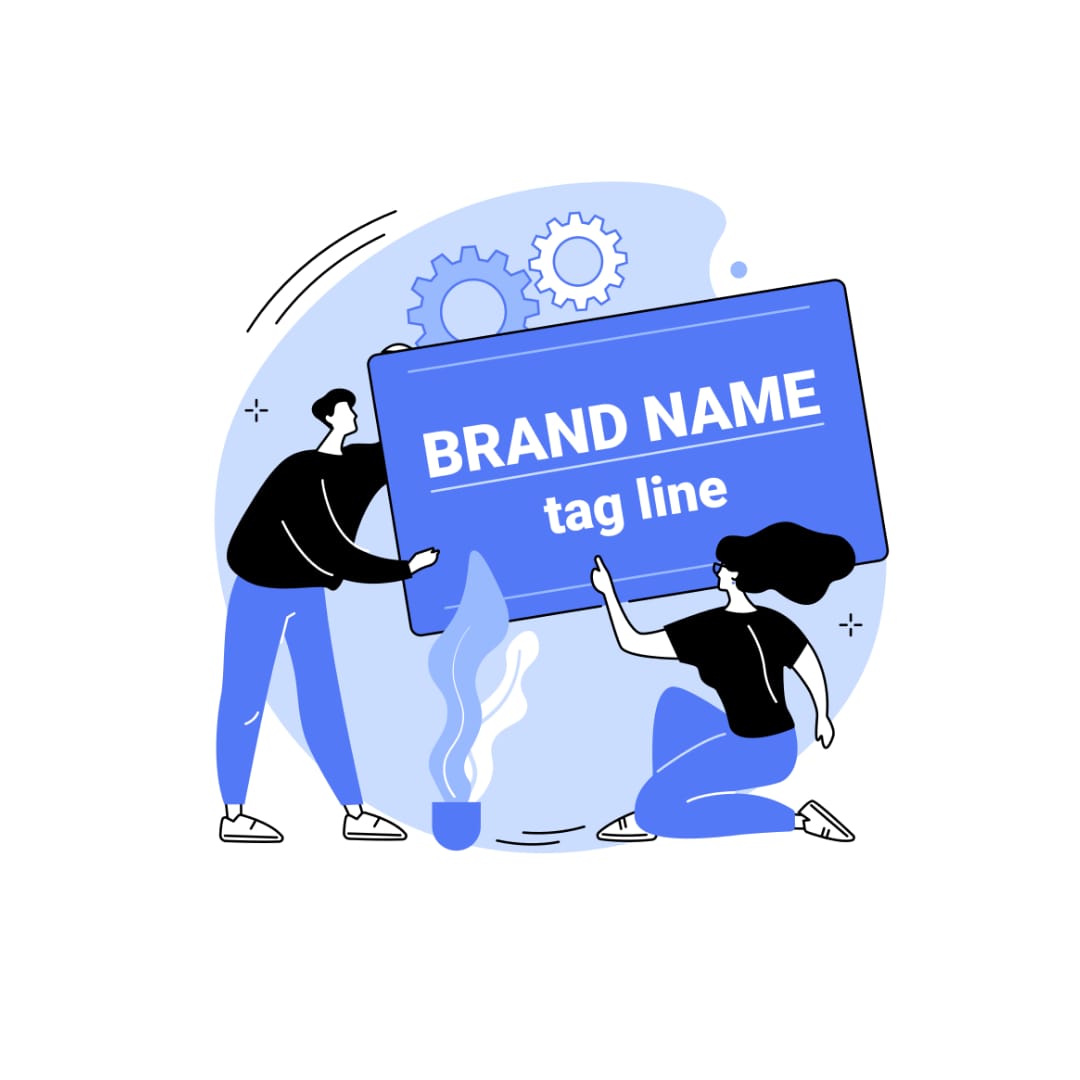
Source: jasalogo.id
Creating a powerful branding strapline is a strategic process, not a haphazard one. By thoughtfully defining your brand identity, brainstorming creatively, rigorously evaluating options, and testing with your target audience, you can craft a strapline that’s both memorable and effective. Remember, your strapline is more than just words; it’s a powerful tool that shapes your brand perception and ultimately drives your business forward.
So, take the time, invest the effort, and watch your carefully crafted strapline work its magic!
FAQ Section
What’s the difference between a strapline and a tagline?
While often used interchangeably, a strapline is typically shorter and more memorable, acting as a concise summary of the brand’s essence. A tagline is broader and can be used for specific campaigns or products.
How long should my strapline be?
Aim for brevity. Ideally, your strapline should be short enough to be easily remembered and easily integrated into various brand materials. Think 5-7 words maximum.
What if my chosen strapline is already in use?
Thorough trademark research is essential. If your chosen strapline is similar to an existing one, you risk legal issues and brand confusion. Consider alternative options or modify your strapline to ensure uniqueness.
How can I test my strapline effectively?
Use a combination of methods: surveys, focus groups, A/B testing on your website, and gathering feedback from social media. Analyze the responses to understand which strapline resonates most with your target audience.
